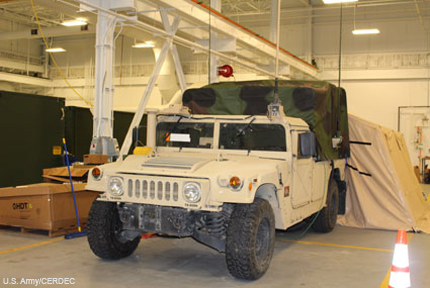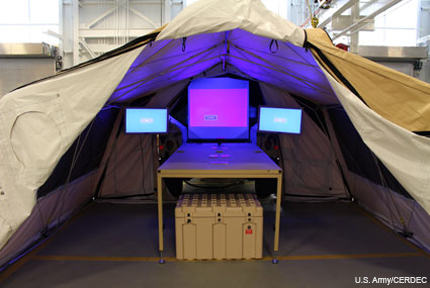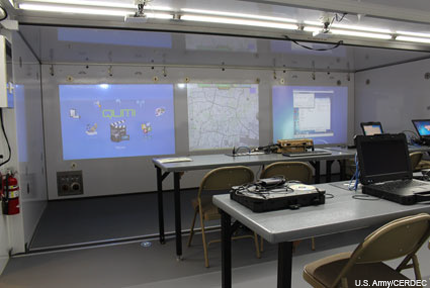Army's new command-posts-to-go support expeditionary maneuvers
Engineers design three mobile command posts that get forces up and running quickly.

The Light-Mobile Command Post is a TAC on wheels.
Military forces these days increasingly have to be ready to be deployed as expeditionary forces—sent out on short notice, often in remote environments and assigned to carry out specific short-term tasks as soon as they arrive. And one of the keys to being a successful expeditionary force is being, well, expeditious in setting up and taking down a command post.
With that in mind, Army researchers have come up with three mobile expeditionary command post configurations, each tailored to types of deployments or forces of various sizes. And the researchers were expeditious about it, too, completing their designs in nine months, according to a news release.
The Expeditionary Command Post Capabilities project, or ECPC, was the result of a collaboration between the Army’s Research, Development and Engineering Command’s communications-electronics center, known as CERDEC, and the Training and Doctrine Command, or TRADOC.
A look at what they produced:

The Light-Mobile Command Post
L-MCP is designed for forces at the brigade level and below. It can be integrated into a light vehicle and includes a quick-erect tent, fold-out table, light but large screens, tactical network components (Warfighter Information Network-Tactical Increment 1) and converged voice communications and mission command systems. What’s more, it can be set up in five minutes, said Jim Clarke, ECPC systems engineer. “The streamlined configuration allows for an even quicker tear down should an emergency situation arise,” he said.
The system also can operate using the vehicle’s onboard power, which saves having to lug a generator along. “By not carrying or towing a generator, the increased mobility soldiers will gain could be a game changer for the TAC [Tactical Command Post],” Clark said.
Combined Arms Battalion Mobile TAC
The ECPC program designed the CAB Mobile TAC for heavier units, integrating mission command and radio capabilities into an M1068 tracked vehicle. Already set up in the vehicle, it allows commanders for work “from the hatch,” via network connectivity—even beyond line of sight—with WIN-T Increment 2 Point of Presence, CERDEC said.
The system could be fitted to a future Army vehicle like the armored multipurpose vehicle (AMPV), which is expected to replace the M113 armored personnel carrier, but the CAB Mobile TAC could also serve as a short-term expeditionary post, said J. Tyler Barton, CERDEC’s ECPC project lead.

Expeditionary Battalion Command Post
This command post, which travels with the acronym EXP BN CP, looks a lot more like a traditional tent-based command post but can be set up and fully operational in 30 minutes, about half the time of the current tent system. Designed for battalion- through corps-level operations, it employs a prototype shelter equipped with tables, laptops, projectors and mission command systems, with power and Internet capability.
It can be transported via ground vehicle or helicopter and, while it might not be available to all battalions, CERDEC said the demonstrator it has developed will help the Army assess the viability of shelter-based command posts.
The expeditionary command posts will get a workout this fall at the next Network Integration Evaluation at Fort Bliss, Texas, where the 1st Squadron, 1st Cavalry Regiment will work with them. “The 1-1 CAV will jump their main command post numerous times and deploy further north than any other unit, so all three of our products will see a lot of action,” Barton said.




